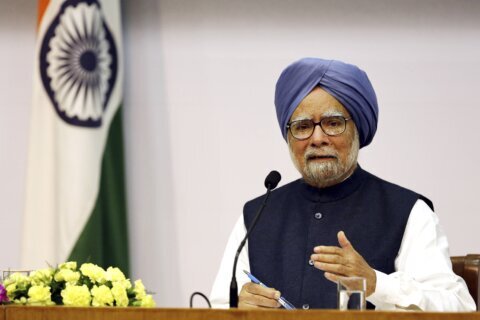Index funds hold certain advantages.
One of the best ways to get a higher investment return is to pay fewer fees. Index funds offer diversified holdings and help investors keep more money so their earnings can compound faster. Index funds “are a great option for any investor and are particularly suitable for smaller retail investors,” says John Ingram, chief investment officer and partner at Crestwood Advisors. Many of the lowest-fee index funds follow large-cap stock indexes in part, and some index funds follow niche sectors. Such funds can be one of the best low-cost ways to invest in those areas. Here are seven of the top low-cost index funds.
iShares Russell 3000 ETF (ticker: IWV)
The Russell 3000 index represents nearly all of the U.S. stock market, covering 98% of the total market cap of U.S. equities, which makes it for great diversification, says Brian Stivers, investment advisor and founder of Stivers Financial Services. He prefers to buy funds from large money-management firms such as BlackRock and Vanguard. These firms manage trillions in assets and have dozens of funds for small investors. IWV boasts an average annual return of 10.9% over the last 15 years and annually outperformed its category by 1.59%. The fund has $12.1 billion in assets under management and a 1.1% yield.
Vanguard FTSE All-World ex-U.S. ETF (VEU)
Stivers prefers to use mostly exchange-traded funds versus mutual funds for ETFs’ lower costs and the ability to trade these funds at the current market price at any time. His choice for a global fund is VEU, which targets large- and mid-cap developed and emerging market companies from dozens of countries and holds more than 3,500 stocks, which is “great diversification,” he says. Stivers also points out that Vanguard is a leader in low-cost funds, noting VEU’s annual expense ratio is 0.08%, or $8 for every $10,000 invested. The fund’s 10-year average return is 7.05%. For investors who prefer mutual funds, VEU is also available as a mutual fund, with the ticker “VFWAX.”
Vanguard Russell 1000 Growth ETF (VONG)
Lori Van Dusen, founder and CEO of LVW Advisors, says investors need exposure to large-cap growth, and the majority of active managers in this sector don’t beat indexes, especially once fees and taxes are added. That’s one of the reasons her firm uses VONG for exposure to this sector. “The benefit of owning VONG is you do not need to predict or have a manager predict what the next Facebook (FB) or PayPal (PYPL) will be because you will own the entire large growth index,” she says. The fund comes with an expense ratio of 0.08% and has returned an average of 19.4% annually over 10 years.
iShares MSCI USA Min Vol Factor ETF (USMV)
USMV tracks the MSCI USA Minimum Volatility Index and invests in U.S. large-cap stocks with lower volatility. Ingram says he likes this fund “as it offers protection from market downturns and periods when hot stocks underperform.” When the S&P 500 rises more than 2% per month, this ETF usually lags the S&P 500, but when the S&P 500 is flat or rises less than 2% per month, USMV usually performs roughly in line with the S&P 500. When the S&P 500 falls, USMV usually outperforms, he adds. Top holdings include software company Adobe Inc. (ADBE) and grocery chain Kroger Co. (KR). USMV has a 0.15% expense ratio and yields 1.45%.
iShares Core S&P Small-Cap ETF (IJR)
Investors should consider some exposure to small-cap stocks as part of their core holdings, Ingram says, and he suggests IJR, which follows the S&P SmallCap 600 index. This fund, and the index it follows, keep out the unprofitable small-cap companies, and it has historically outperformed the Russell 2000, a much broader small-cap index. Top holdings include mailing and shipping services company Stamps.com Inc. (STMP) and retailer Macy’s Inc. (M). “In today’s market, it is good to have exposure to small stocks which usually perform well during cyclical recoveries. We expect the current recovery to continue and believe this allocation is attractive,” he says. The fund comes with an expense ratio of 0.06%.
Invesco S&P Ultra Dividend Revenue ETF (RDIV)
Todd Rosenbluth, head of ETF and mutual fund research at CFRA Research, says he expects RDIV to continue its strong performance in the first half of 2021 into the second part of the year. Through June, the fund gained more than 25%, and it offers a 4.64% yield. “RDIV provides multicap dividend exposure and seeks to avoid value traps,” he says. RDIV is based on the S&P 900 Dividend Revenue-Weighted Index. It uses several steps to compile the 60-name index, including weeding out firms with the highest dividend yields overall and the highest dividend payout ratios in each sector. Afterward, the ETF weights the remaining highest dividend yielders based on earned revenue and then it rebalances quarterly. Right now, pharmaceutical giant Pfizer Inc. (PFE) and telecom company Verizon Communications Inc. (VZ) are among the fund’s top positions.
SPDR Blackstone Senior Loan ETF (SRLN)
In an ultra-low interest rate environment, it’s tough for investors to find income. One alternative to low-yielding U.S. Treasurys is SRLN. The fund buys floating-rate bonds that will increase interest payments as interest rates rise. Ingram says SRLN has an “attractive” yield of 4.59%. The fund’s duration is very low, at about three months, which protects against rising interest rates. “It is very hard to predict interest rates, which have been falling since April of this year. Still, given the strong economic recovery and rising inflation, SRLN is well positioned in today’s fixed-income market,” he says. Investors should be aware that floating-rate notes carry credit risk and have historically underperformed when the economy slows. SRLN has an annual expense ratio of 0.7%.
Seven of the best low-cost index funds:
— iShares Russell 3000 ETF (IWV)
— Vanguard FTSE All-World ex-U.S. ETF (VEU)
— Vanguard Russell 1000 Growth ETF (VONG)
— iShares MSCI USA Min Vol Factor ETF (USMV)
— iShares Core S&P Small-Cap ETF (IJR)
— Invesco S&P Ultra Dividend Revenue ETF (RDIV)
— SPDR Blackstone Senior Loan ETF (SRLN)
More from U.S. News
5 Best Infrastructure ETFs to Buy
9 of the Best Consumer ETFs to Buy Now
5 Buffered ETFs That Offer Downside Protection
7 Best Low-Cost Index Funds originally appeared on usnews.com
Update 08/13/21: This story was published at an earlier date and has been updated with new information.







